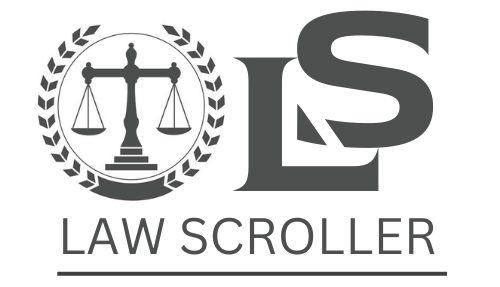Mirena is a hormonal intrauterine device (IUD) approved in the United States in 2000 for contraception. The device is T-shaped, placed inside the uterus, and releases levonorgestrel (a progestin) over time. While the device is widely used and generally effective for birth control, in the years since its introduction, a number of users have alleged significant adverse effects and have brought lawsuits alleging design defects, failure to warn, and misrepresentation of risks.
Basis of the Litigation

The litigation against Bayer (the manufacturer) generally arises under U.S. product liability (and related) legal theories:
- Design defect / manufacturing defect – Plaintiffs claim the product was defectively designed such that it posed unreasonable risks (for example, migration, perforation of the uterus) even when correctly used.
- Failure to warn / inadequate instructions – Claims that Bayer failed to provide adequate warnings to physicians and/or patients regarding serious risks (e.g., uterine perforation, device migration, pseudotumor cerebri, breast cancer) associated with Mirena.
- Misrepresentation / marketing claims – Allegations that Bayer mischaracterized the risks of the device (or overstated the safety) and engaged in deceptive marketing.
- Medical malpractice – Some actions also involve claims against physicians or clinics for improper insertion or monitoring of the device.
In short, these lawsuits hinge on the assertion that women using Mirena suffered serious injury (or the risk thereof) from complications that they allege were linked to the device and should have been disclosed or prevented.
Key Injuries & Allegations
The lawsuits have focused on several major categories of alleged harm:
- Uterine perforation/migration: The device allegedly perforates the uterine wall or migrates outside the uterus into the abdomen or other organs, requiring surgical removal and causing complications.
- Pseudotumor cerebri / idiopathic intracranial hypertension (IIH): A condition of elevated intracranial pressure (mimicking a brain tumor) with symptoms like headaches, vision problems, and possible blindness. Some lawsuits claimed Mirena’s hormone (levonorgestrel) triggered this.
- Breast cancer risk: More recently, litigation has included claims that Mirena (or the hormone it releases) is linked to increased breast cancer risk, and alleged failure of Bayer to warn users.
- Other complications: Including ectopic pregnancy, device embedment, pelvic inflammatory disease, infertility, and emotional/hormonal effects (sometimes referred to informally as the “Mirena crash”).
Litigation Developments & Outcomes
Multidistrict Litigation (MDL) and State Consolidations
- Many Mirena cases were consolidated into multidistrict litigation (“MDL”) for efficiency in federal court. For example, one MDL in the Southern District of New York (MDL 2434) addressed migration/perforation claims.
- In New Jersey a multicounty litigation (MCL) consolidated cases alleging device migration/perforation in state court.
Settlements and Dismissals
- In 2017/2018, Bayer offered a settlement (publicly reported at about US$12.2 million) to resolve many of the uterine perforation/migration claims.
- However, in the federal MDL addressing the IIH/pseudotumor cerebri claims, plaintiffs’ expert testimony was excluded by the court (on causation grounds) and many claims were dismissed. For example, the Second Circuit affirmed dismissals in 2017.
- As of 2025, the major federal MDLs are closed, and many attorneys are no longer accepting new migration/perforation cases.
- A newer line of litigation (breast cancer risk) is still ongoing: in 2023 a U.S. federal judge cleared a class‐action claim to proceed, though parties later stipulated to dismissal in 2024.
Legal Challenges & Considerations
From a U.S. law perspective, these Mirena lawsuits highlight several important issues:
- Causation: Proving that Mirena caused the injury (general causation) and that a particular injury was caused by its use (specific causation) is a high hurdle. Many claims were dismissed because plaintiffs could not sufficiently show that the device, rather than other factors, caused the injury.
- Statute of limitations / time-bar: Many claims were dismissed because plaintiffs filed too late (beyond the statute of limitations). For example, in the 2014 order, many claims in MDL 2434 were dismissed as time-barred.
- Warning duty and intermediary physician role: Courts have grappled with whether the manufacturer’s duty to warn is directed to end‐users (patients) or to prescribing physicians. One source notes a court holding that Bayer’s warning obligation was to physicians, not directly to consumers.
- Magnitude of compensation: While some settlements have occurred, the amounts (in many cases) have been modest, and many cases were dismissed rather than resolved in plaintiffs’ favor.
- Continuing product on the market: Despite litigation, the device has not been recalled in the U.S. and remains an FDA-approved option; this can affect risk perception and legal strategy.
Current Status & What Injured Individuals Should Know
- If you believe you were harmed by Mirena, you should consult a qualified product‐liability attorney promptly. Because of time limits (statute of limitations) and evolving case law around causation, early evaluation is important.
- Even though major MDLs for migration/perforation are closed, new claims (especially around breast cancer risk) may still be viable depending on jurisdiction and facts.
- Compensation (if awarded) may cover things such as medical expenses, lost wages, pain and suffering, and possibly punitive damages in cases of egregious manufacturer conduct.
- Keep all medical records, implant records, communications with your doctor, and any device–related diagnostic or surgical information, as these will be crucial in evaluating a claim.
- Realize that product‐liability litigation against large pharmaceutical/manufacturing companies is typically complex, takes time, and requires significant proof of causation and risk.
Take-away
The “Mirena lawsuit” phenomenon is a notable example of medical device litigation in the United States: a widely‐used contraceptive device offering benefits for many, but also alleged (by some users) to carry under-disclosed risks of serious injury. While many claims have been settled or dismissed, and litigation has been challenging for plaintiffs, the legal landscape continues to evolve — especially with newer claims involving breast-cancer risk.
If you or someone you know used Mirena and experienced complications, it is legally prudent to obtain a consultation with a lawyer experienced in defective medical-device litigation to assess whether a viable claim exists.


 Oliver Johnson is LawScroller’s Senior Legal Correspondent specializing in civil litigation, class actions, and consumer lawsuit coverage. He breaks down complex settlements and court decisions into clear, practical guidance for readers.
Oliver Johnson is LawScroller’s Senior Legal Correspondent specializing in civil litigation, class actions, and consumer lawsuit coverage. He breaks down complex settlements and court decisions into clear, practical guidance for readers.